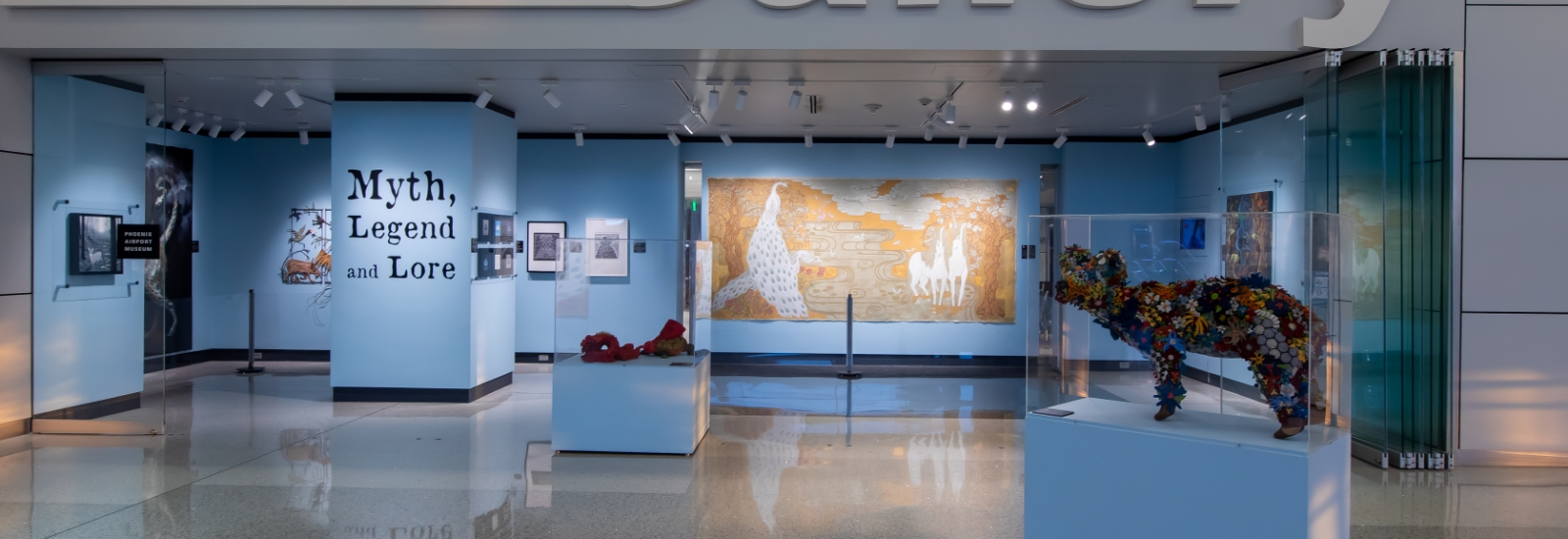Terminal 3 Museum Exhibitions
Terminal 3 Exhibitions
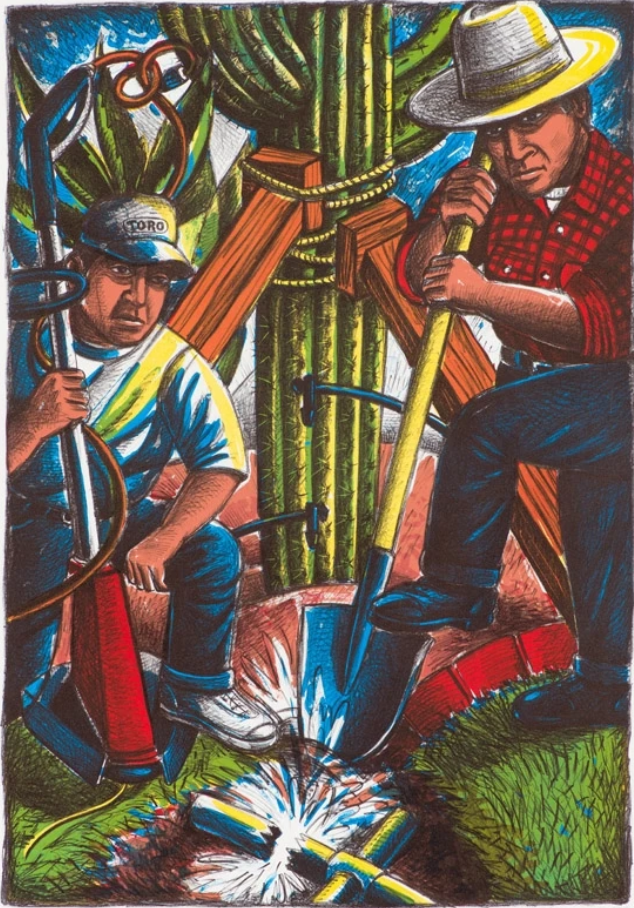
Rooted & Rising
From the Phoenix Airport Museum Collection
Through September 2026
Location
- Terminal 3, level 4 Gallery (post-security)
The desert is a place of resilience. Artists find inspiration in its extremes— from open expanses of land to dense urban centers where buildings and powerlines stand shoulder to shoulder with Saguaro cacti. Rooted & Rising invites us to consider the land as not only a backdrop, but a living force.
This exhibition features 20 artists reflecting the evolving relationship between the desert’s natural and built environment. Some artists highlight the humor and adaptation required for desert living, while others consider the ways growth and development transform the land. Some works reflect on the enduring connection between people and place. Together, these perspectives capture both the beauty and challenges of life in the desert.
LAND ACKNOWLEDGEMENT STATEMENT
The City of Phoenix acknowledges that Phoenix is located within the homeland of the O’odham and Piipaash peoples and their ancestors, who have inhabited this landscape from time immemorial to present day. The landscape is sacred and reflects cultural values central to the O’odham and Piipaash way of life and their self-definition. This acknowledgement demonstrates our commitment to work in partnership with the ancestral Indigenous communities to foster understanding, appreciation and respect for this heritage.
Featured artists:
-
David Emit Adams
-
Shonto Begay
-
Helen Burbank
-
Manny Burruel
-
Michael Chiago Sr.
-
Joel Coplin
- Muriel Magenta
-
Stephen Morath
-
Woodward Payne
-
Juane Quick-To-See Smith
-
Randall B. Schmidt
-
Brenda Semanick
-
Carol Shinn
-
Linda J. Shearer-Whiting
-
Tom Story
-
Patssi Valdez
-
Wendy Willis
-
Elizabeth Yazzie
-
Frank Ybarra
-
Mark Zillman
Image caption: Frank Ybarra, Desert Landscape Maintenance, ©2000, lithograph on paper
La Lotería: An Exploration of Mexico
Paintings by Teresa Villegas
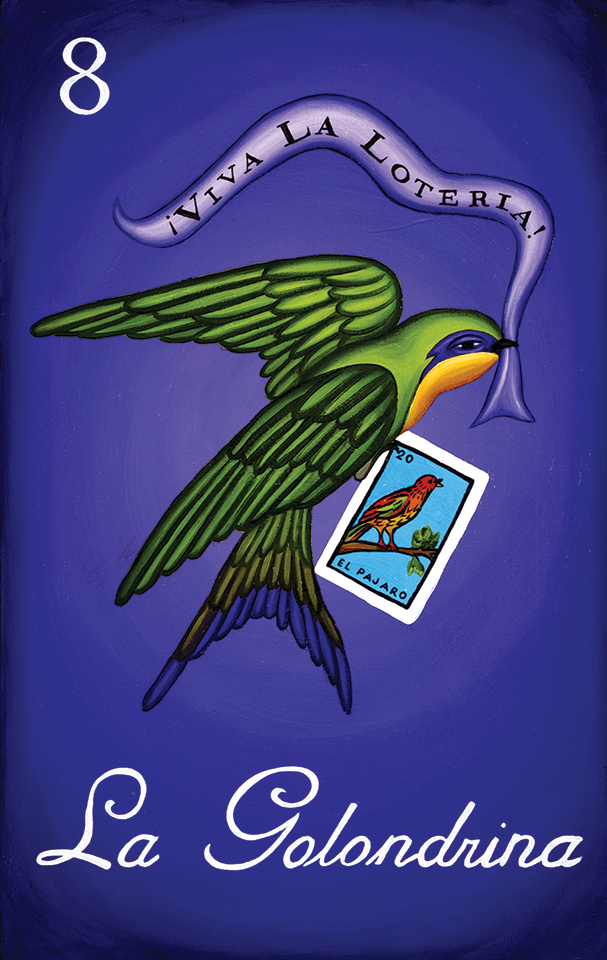
Location
-
Terminal 3, level 4, east arrivals area
Lotería is a cherished Mexican card game with a captivating blend of riddles, chance and iconic imagery. Artist Teresa Villegas reimagines each of the game’s 54 cards into a series of paintings inspired from cultural stories, food and everyday items. By infusing traditional Lotería images with her own personal narrative, Villegas adds a new perspective to a traditional game.
Spanish for “lottery”, Lotería is one of the most popular and culturally significant games in Mexico. It is often referred to as “Mexican bingo” because of its similar tabla, or board, featuring 16 spaces that match a random selection of cards. To play, an announcer pulls a card and describes it with a riddle or poem. When a player has a matching image, they mark their game boards accordingly. The first player to mark enough spaces in a straight or diagonal line on their board wins by shouting, “LOTERIA!”.
“Every culture has its idioms and icons - certain words and images that transcend the literal and reside in the psyches of the people. This installation explores some of the ubiquitous images, traditions, historical figures, food and popular culture of Mexico using the format of La Lotería. The purpose of this installation is to inspire interest, understanding and dialog between the people of the United States and Mexico.” – Teresa Villegas
Image caption: Teresa Villegas, La Golondrina (The Swallow), ©2002, oil painting on panel, 14.35 x 9.5”, donated by Teresa Villegas
Desert Citizens
Photographs by Mark Klett
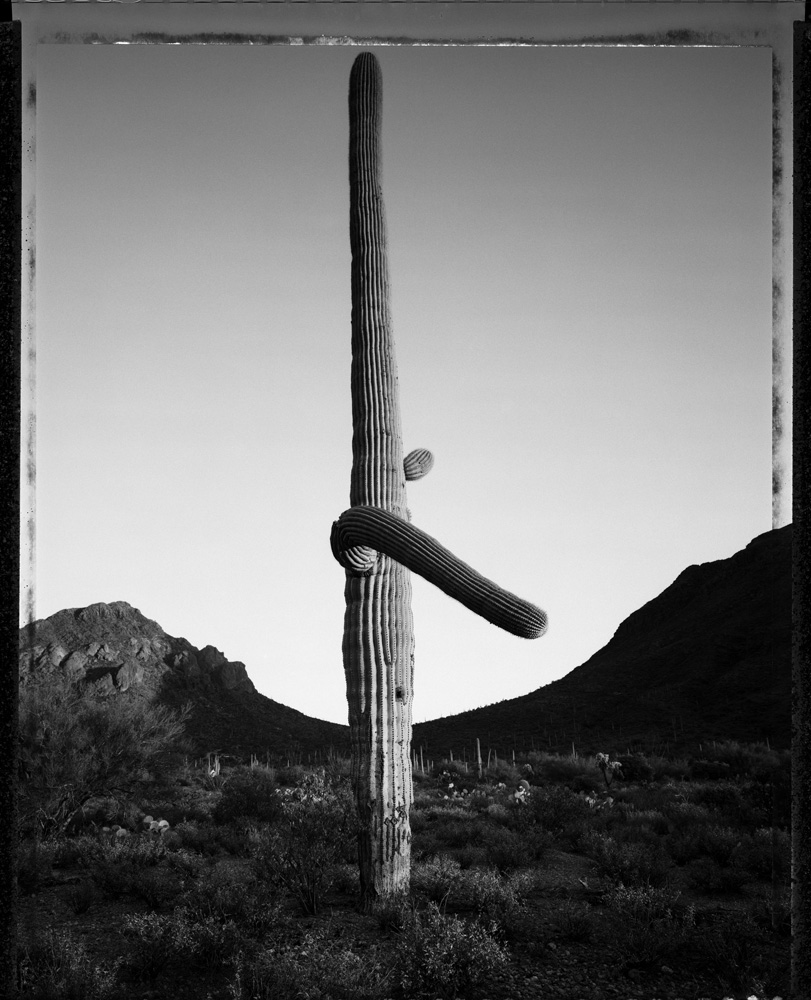
Location
-
Terminal 3, level 2, west end near TSA Security Checkpoint entrance
Overview
“The saguaro cactus only grows in the Sonoran desert in the US state of Arizona and the Mexican state of Sonora. Individual cacti may grow as tall as fifty feet and live for two hundred years. After about seventy years the cactus may grow arms. They are magnificent plants and walking among them gives a presence that is undeniably human. For centuries, people native to the Desert have considered saguaros to be the souls of lost ancestors.
I included cacti in photographs as soon as I moved to Arizona in 1982. Sometime around 1987 I started to make a series of what I considered to be saguaro portraits. I would find a cactus that interested me and walk around it, examining all sides. I would put the photographs I made in a drawer, and after about twenty years, I had several hundred saguaro negatives. I thought of the work as a type of study and felt that the photographs needed to be seen as a group. The series was originally given the name Desert Citizens.”
Mark Klett is a photographer interested in history and geology. He teaches landscape photography, seminars on photographic practice for artists and classes in digital printing and technology at Arizona State University in Tempe, Arizona.
Image caption: Mark Klett, Desert Citizen 6, 1991, inkjet print on archival paper, Phoenix Airport Museum Collection
People Watching At the Airport
Ongoing

Location
-
Terminal 3, level 1, near ticketing
Overview
There is a story behind every person. By observing facial expressions, clothing, or belongings, we may gain insight into who they are, where they are from, and why they might be traveling - especially at the airport. Some people enjoy using this information to make up stories about the people they see. This exhibition features three artists who have created a unique narrative using the art form of sculpture. Whether we are standing in line, waiting for luggage, or dining at a restaurant, people-watching is an interesting way to pass the time - especially at the airport.
Art on a Platter
From the Phoenix Airport Museum Collection
Location
- Terminal 3, level 1, west end
Throughout history, platters made of clay have been used by many cultures for serving ample quantities of various foods. This humble object has always held a utilitarian role for presenting food for feasts and celebrations.
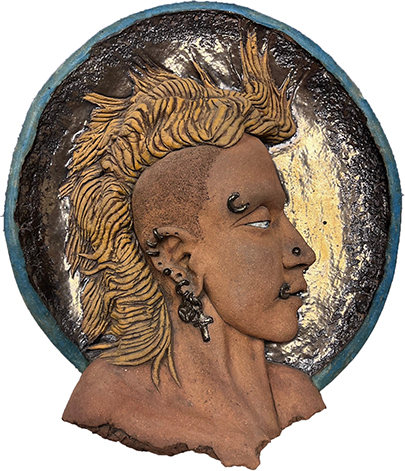 Today, platters can also serve as a vehicle for artistic expression. Ceramic artists may throw platters on a potter’s wheel, hand-build them or use a combination of the two. They use various types of clay, glazes and firing techniques to craft platters that may be both beautiful and functional or sometimes just sculptural and only meant to be admired. These artists are serving up Art on a Platter.
Today, platters can also serve as a vehicle for artistic expression. Ceramic artists may throw platters on a potter’s wheel, hand-build them or use a combination of the two. They use various types of clay, glazes and firing techniques to craft platters that may be both beautiful and functional or sometimes just sculptural and only meant to be admired. These artists are serving up Art on a Platter.
Image caption: Randy Schmidt, Punk Rocker Portrait, ©2000s, high-relief ceramic with glaze, Phoenix Airport Museum collection

